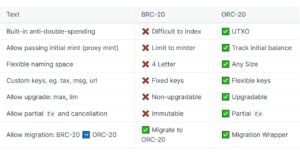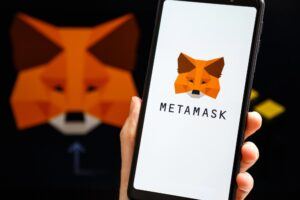What is the new ORC-20 token standard? It is the first serious project of its kind to be natively based on Bitcoin and allows user-generated currencies. A rudimentary precursor has already been very successful.
What is ORC-20?
ORC-20 is a new standard for user-generated tokens on the Bitcoin blockchain. The project was first introduced on April 30, 2023 by the Twitter channel OrcDAO. It is a technical improvement of the rudimentary BRC-20 standard, which was created in early March based on the Ordinals Protocol. Its name in turn is derived from Ethereum’s successful ERC-20, which serves as a model.
BRC-20 was created as a fun project. The developers of ORC-20, on the other hand, want to create a serious version with their new token standard, which corrects technical shortcomings of the BRC-20.
Better adaptability, scalability and security are strived for. The ORC-20 is compatible with the BRC-20. The basic functionality of both Bitcoin tokens is the same.
Data in the form of a JSON file is attached to the smallest unit of a Bitcoin – a Satoshi. The special characteristics of the Satoshi are stored in this file.
Existing BRC-20 tokens have the option to migrate to the ORC-20 standard. The first native Bitcoin stablecoin Stably USD (#USD) is pursuing this plan.
First Sensible Token Standard on Bitcoin?
ORC-20 is intended to be the first sensible token standard on Bitcoin. Within the largest crypto network on earth, it is then possible to natively create tokens with certain properties – such as stablecoins.
The new standard primarily addresses a weakness of the older BRC-20: the uncertainty regarding double-spending attacks. The use of UTXOs closes this gap.

In addition, the new standard is intended to provide more transparency so that users can understand for themselves how high the exact circulating supply of a specific token is in order to prevent fraud.
Further technical bottlenecks are eliminated. BRC-20 uses a naming system that only allows four digits. ORC-20 allows a completely free choice of name. Transfers of ORC-20 tokens can also be partially canceled. In addition, subsequent upgrades are possible, while BRC-20 only allows static tokens.
Users can combine money transfers to different recipients in one transaction. The ecosystem of the BRC-20 is also heavily based on centralized indices and is therefore not secure against manipulation.
According to a statistic from Dune, just over 268,000 ORC-20 tokens were created in May 2023. Despite all the innovations, the tokens cannot be used within smart contracts like the competitor Ethereum. There, this property is a significant part of the success.
Reading tip: Bitcoin: BRC-20 tokens go through the roof



